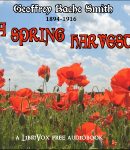
Poems of Gerard Manley Hopkins (Version 2)
Gerard Manley Hopkins (1844–1889) was one of the most innovative of English Victorian poets, best known now for his vivid and original imagery of the natural world in verses such as “The Windhover” and “Pied Beauty”. Hopkins was a master of miniaturisation and condensation. His poetry is characterised by freshness, concentrated originality and often unconventional syntax in which words may have multiple shades of meaning. One of his most important innovations was what he called “sprung rhythm”, a style intended to be read aloud in which — like natural speech — the stressed syllables ‘spring’ between a variable number of unstressed syllables, and in which the poetic lines are defined not by number of syllables but by number of stresses. At the age of 24 Hopkins converted to Catholicism and began training as a Jesuit priest. For seven years he wrote no poetry at all, believing that he was not called by God to do so. This period ended with a concentrated explosion of originality with “The Wreck of the Deutschland”, his greatest and longest poem (number 4 in this collection) which is dedicated to the memory of five nuns who lost their lives while attempting the sea passage from Germany to England in 1875. Sometimes considered ‘difficult’ by readers who approach it in printed form, the poem’s outlines become clearer when read aloud. It is divided into two sections, an introductory part in which the poet discourses with wonder on the sudden return of his poetic muse after so […]





























